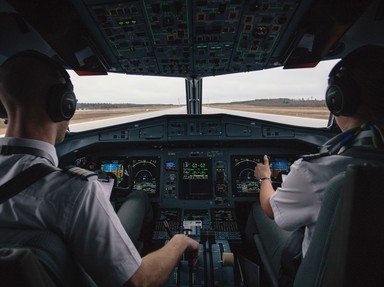Quiz Answer Key and Fun Facts
1. Which of the following "widebody" airliners does not require a flight engineer?
2. Which one of these business jets is prone to tipping over if there is more than 125 gallons more fuel in one side than in the other?
3. The only difference between the Cessna 421 Golden Eagle and the Cessna 414 Chancellor is the engines.
4. Which of these trainers was the last to enter the market?
5. Which of these out of production airliners carried no more than 100 passengers, even in its highest density seating arrangement?
6. Which of these business jets could not make the flight from Seattle to Honolulu with full standard fuel?
7. Which of the following World War II fighters was produced first?
8. The Aerostar was produced by Piper Aircraft throughout its life.
9. Which of these twin engine airplanes can a pilot earn a multi-engine rating in that will not allow him to fly any of the others listed?
10. Regional jet airliners aren't exactly a new concept, as we saw with the Caravelle. Which of these regional jets was in service first?
Source: Author
Jayman0755
This quiz was reviewed by FunTrivia editor
ArleneRimmer before going online.
Any errors found in FunTrivia content are routinely corrected through our feedback system.
